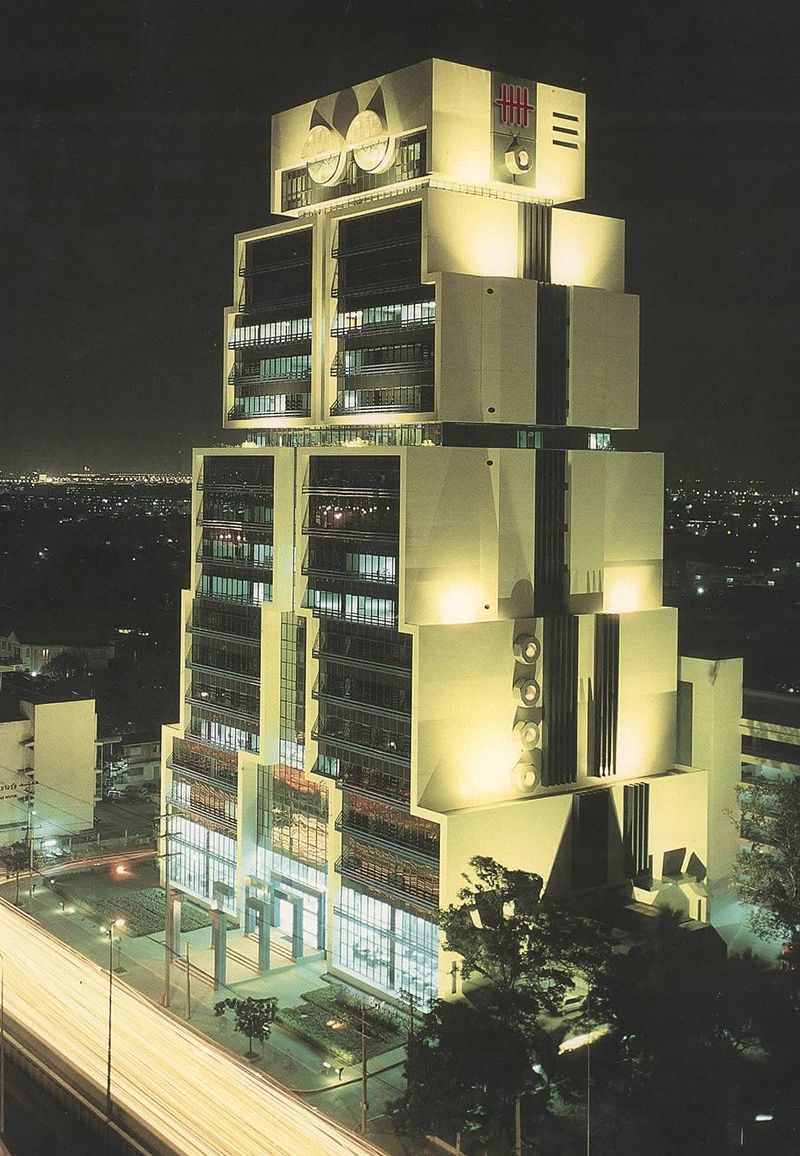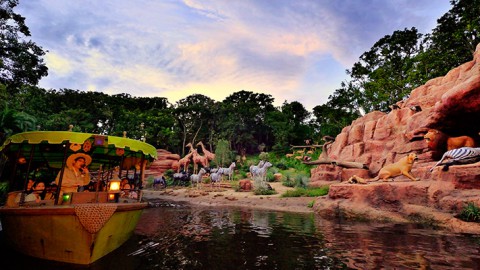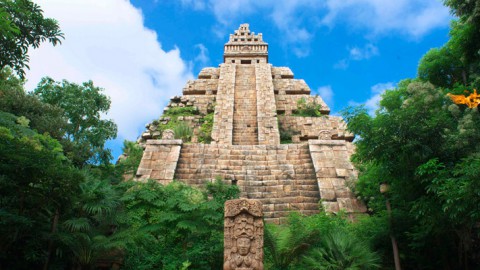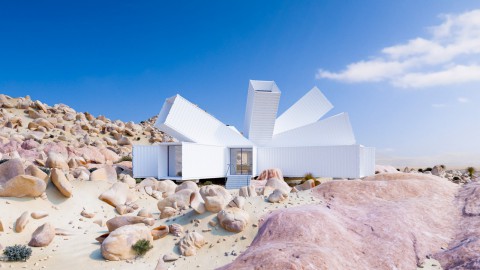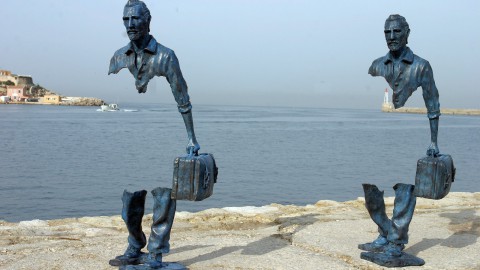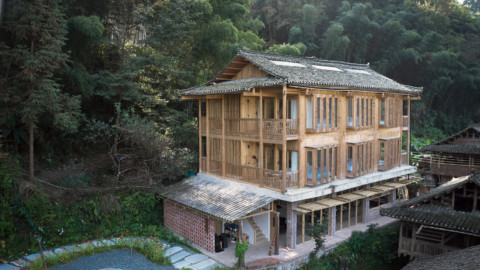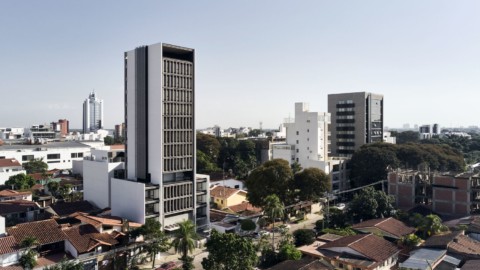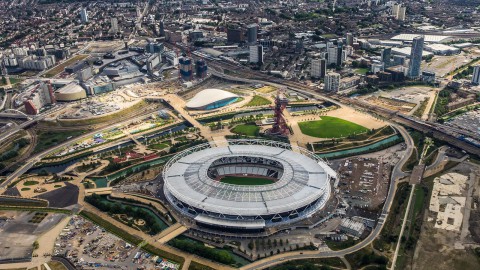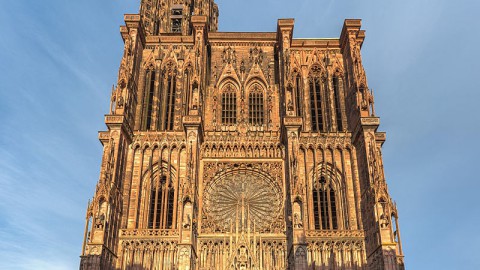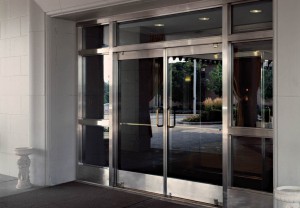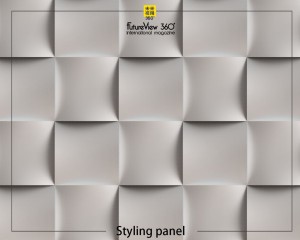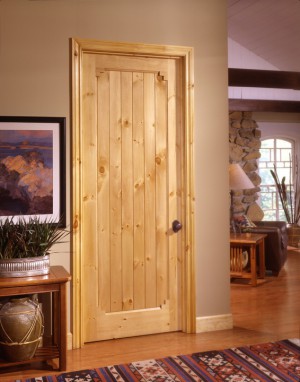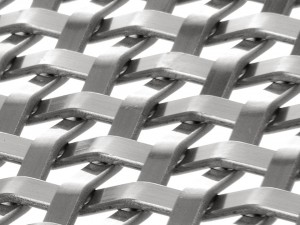Don’t you think it’s addictive?
Want to know more about the beauty of architecture?
Come and join our members to explore the beauty of architectural design.
覺得看得不過癮嗎?
想要知道更多建築之美嗎?
快來加入我們的會員,一同探索建築設計之美。
The above article is purely for appreciation and sharing purposes, as well as the construction of new technology and the public can be in-depth understanding of the information at the same time there are sources, will be able to query, no use of the document as a commercial transaction, if illegal, please inform the We will immediately remove the site, thank you for cooperation.
以上文章純粹作為欣賞及分享用途,以及將建築新型技術傳遞給與大眾能夠深入了解,同時資料還有來源,將可查詢,絕無使用該文件資料作為商業交易行為,如有違法請務必告知該網站我們將立即處理撤除,謝謝合作。
Robot Building 機器人大廈

The Robot Building (Thai: ตึกหุ่นยนต์), located in the Sathorn business district of Bangkok, Thailand, houses United Overseas Bank’s Bangkok headquarters. It was designed for the Bank of Asia by Sumet Jumsai to reflect the computerization of banking; its architecture is a reaction against neoclassical and high-tech postmodern architecture. The building’s features, such as progressively receding walls, antennas, and eyes, contribute to its robotic appearance and to its practical function. Completed in 1986, the building is one of the last examples of modern architecture in Bangkok.
機器人大樓(泰語:ตึกหุ่นยนต์)位於泰國曼谷的沙吞商業區,擁有大華銀行曼谷總部。 它是由Sumet Jumsai為亞洲銀行設計的,以反映銀行的計算機化; 它的架構是對新古典主義和高科技後現代建築的反應。 建築物的特徵,例如逐漸退去的牆壁,天線和眼睛,有助於其機器人外觀和實用功能。 該建築於1986年完工,是曼谷現代建築的最後一個例子。
Status:Complete
Type:Office
Location:191 South Sathorn Road
Bangkok, Thailand 10120
Coordinates:13.720448°N 100.527311°ECoordinates: 13.720448°N 100.527311°E
Completed:1986
Cost:US$10 million
Technical details
Floor count:20
Floor area:23,506 m2 (253,020 sq ft)
Design and construction
Architect:Sumet Jumsai
狀態:已完成
類型:辦公室
地點:南沙吞路191號
曼谷,泰國10120
坐標:13.720448°N 100.527311°ECoordinates:13.720448°N 100.527311°E
完成時間:1986年
費用:1000萬美元
技術細節
樓層數:20
建築面積:23,506平方米(253,020平方英尺)
設計和施工
建築師:Sumet Jumsai
Design
Thai architect Sumet Jumsai designed the Robot Building for the Bank of Asia, which was acquired by United Overseas Bank in 2005.He had been asked by the Bank of Asia’s directors to design a building that reflected the modernization and computerization of banking and found inspiration in his son’s toy robot.
Sumet designed the building in conscious opposition to postmodern styles of the era, particularly classical revivalism and high-tech architecture as embodied in the Centre Pompidou. While Sumet praised the inception of postmodernism as a protest against puritanical, bland modern design, he called it “a protest movement which seeks to replace without offering a replacement”. Sumet dismissed mid-1980s classical revivalism as “intellectual bankrupt” and criticized the “catalogue[s] of meaningless architectural motifs” that characterized classical revivalism in Bangkok. He further dismissed high-tech architecture, “which engrosses itself in the machine while at the same time secretly…lov[ing]…handmade artifacts and honest manual labor”, as a movement without a future.
Sumet wrote that his building “need not be a robot” and that a “host of other metamorphoses” would suffice, so long as they could “free the spirit from the present intellectual impasse and propel it forward into the next century”. He wrote that his design might be considered post-high-tech: rather than exhibiting the building’s inner workings, he chose to adorn a finished product with the abstractions of mechanical parts. His building, he argued, struck against the 20th century vision of the machine as a “separate entity” often “elevated on a pedestal for worship” and, by becoming “a part of our daily lives, a friend, ourselves”, cleared the way for the 21st century amalgam of machine and man.
The building was completed in 1987 at a cost of US$10 million. By the mid-1980s, architectural modernism had faded in Bangkok; this building is one of the last examples of the style.
設計
泰國建築師Sumet Jumsai為亞洲銀行設計了機器人大樓,該大樓於2005年被大華銀行收購。亞洲銀行董事要求他設計一座反映銀行業現代化和計算機化的建築,並在他兒子的玩具機器人。
Sumet設計的建築有意識地反對時代的後現代風格,特別是蓬皮杜藝術中心所體現的古典復興主義和高科技建築。雖然蘇梅特稱讚後現代主義是對抗清教徒,平淡無奇的現代設計的一種抗議,但他稱之為“一種尋求替代而不提供替代品的抗議運動”。蘇美特將20世紀80年代中期的古典復興主義視為“知識分子破產”,並批評了曼谷古典復興主義的“無意義建築圖案目錄”。他進一步駁斥了高科技建築,“它在機器中全神貫注,同時偷偷地……嘲笑……手工製品和誠實的體力勞動”,作為一個沒有未來的運動。
蘇美特寫道,他的建築“不一定是一個機器人”,只要他們能夠“將精神從當前的知識僵局中解放出來,推動它進入下一個世紀”,那麼“其他變態”就足夠了。他寫道,他的設計可能被認為是後高科技:他沒有展示建築的內部工作,而是選擇用機械零件的抽象裝飾成品。他認為,他的建築反映了20世紀對機器的看法,認為它是一個“獨立的實體”,通常“在崇拜的基座上升高”,並且通過成為“我們日常生活的一部分,朋友,我們自己”,清除了21世紀機器和人的混合方式。
該建築於1987年完工,耗資1000萬美元。到20世紀80年代中期,建築現代主義在曼谷消失了;這座建築是這個風格的最後一個例子。

Characteristics
The building is 20 stories tall and has a total floor area of 23,506 m2 (253,016 ft2). The floor areas decrease progressively at the 4th, 8th, 12th, 16th, and 18th floors; the staggered shape both contributes To the robot’s appearance and is an efficient solution to setback regulations requiring an 18 degree incline from each side of the property line. The building’s ground floor is a double-height banking hall.The hall’s interior architecture, designed in Association with the firm 7 Associates, was designed to further the robotic appearance of the building; four sculptures by Thai artist Thaveechai Nitiprabha stand at the main door. Mezzanine floors located on each side of the banking hall contain offices and meeting rooms. The building’s second floor features a large multipurpose hall, offices, and training rooms, and its upper floors contain general office space. An eight-story parking garage is located behind the main building.
The decorative exterior contributes its building’s robotic appearance, although it often serves practical functions as well. Two antennas on the building’s roof are used for communications and as lightning rods. On the building’s upper facade, in front of the main Meeting and dining rooms of the top executive suites, are two 6 m (19.7 ft) lidded eyeballs that serve as windows. The eyeballs are made of reflective glass; the lids are made of metallic louvers. Nuts made of Glass-reinforced concrete adorn the building’s sides; the building’s largest nuts measure 3.8 m (12.5 ft) in diameter and were the largest in the world at the time of their construction. The building’s east and west walls (the robot’s sides) Have few apertures to shield its interior from the sun and to increase energy efficiency, and its north and south sides (the robot’s front and back) are tinted curtain walls whose bright blue color was chosen because it was the symbol of the Bank of Asia.
特點
該建築高20層,總建築面積為23,506平方米(253,016平方英尺)。樓面面積在第4層,第8層,第12層,第16層和第18層逐漸減少;交錯的形狀既有助於機器人的外觀,也是一種有效的解決方案,需要從物業線兩側傾斜18度。該建築的底層是一個雙層高的銀行大廳。大廳的室內建築與7 Associates公司合作設計,旨在進一步提升建築的機器人外觀;泰國藝術家Thaveechai Nitiprabha的四件雕塑站在大門口。位於銀行大廳兩側的夾層樓設有辦公室和會議室。該建築的二樓設有一個大型多功能廳,辦公室和培訓室,其上層包含一般辦公空間。主樓後面有一個八層樓的停車庫。
裝飾性外觀有助於其建築的機器人外觀,儘管它通常也具有實用功能。建築物屋頂上的兩個天線用於通信和避雷針。在建築物的上部立面上,在頂級行政套房的主會議室和餐廳前面,有兩個6米(19.7英尺)的帶蓋眼球作為窗戶。眼球由反光玻璃製成;蓋子由金屬百葉窗製成。玻璃鋼混凝土製成的堅果裝飾在建築物的兩側;該建築最大的螺母直徑為3.8米(12.5英尺),是世界上建造時最大的螺母。建築物的東西牆(機器人的兩側)有很少的孔可以遮擋其內部與太陽並提高能源效率,其南北兩側(機器人的正面和背面)是有色的幕牆,其明亮的藍色被選中因為它是亞洲銀行的象徵。

FROM:https://en.wikipedia.org/wiki/Robot_Building
Don’t you think it’s addictive?
Want to know more about the beauty of architecture?
Come and join our members to explore the beauty of architectural design.
覺得看得不過癮嗎?
想要知道更多建築之美嗎?
快來加入我們的會員,一同探索建築設計之美。
The above article is purely for appreciation and sharing purposes, as well as the construction of new technology and the public can be in-depth understanding of the information at the same time there are sources, will be able to query, no use of the document as a commercial transaction, if illegal, please inform the We will immediately remove the site, thank you for cooperation.
以上文章純粹作為欣賞及分享用途,以及將建築新型技術傳遞給與大眾能夠深入了解,同時資料還有來源,將可查詢,絕無使用該文件資料作為商業交易行為,如有違法請務必告知該網站我們將立即處理撤除,謝謝合作。

